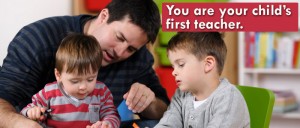Articles being referenced:
- Students’ images of mathematics by Lee Martin and Pamela Gourley-Delaney
11
- It’s in the bag: Parental involvement in a numeracy at-home program by Tracey Muir
12
Have you ever had a student claim that they hate math, or that math doesn’t play an important role in his or her life? All too often students don’t succeed in math classes because they think it doesn’t matter and no one is there to show them that it does. Perhaps part of the reason is that students don’t always recognize that what they are doing is math. As Lee Martin and Pamela Gourley-Delaney write, students “tend to see mathematics as largely computational, tend to believe that math problems should be solvable in 5-10 min or less, and have difficulty finding applications of mathematics outside of school” (597). With this view of mathematics, it presents a number of barriers to mathematical success. In a study completed by Martin and Gourley-Delaney, they found that students could easily identify mathematics in the context of the classroom, but there was much more ambiguity when they were asked to find math in their lives outside of the classroom. Some students saw numbers and claimed it was therefore math, while others said it wasn’t because “its not involving MATH” (Martin and Gourley-Delaney, 605). It might be easier for students to identify math in school because they have a math teacher who is teaching them during math class. But how can we extend this view of mathematics to the larger world? How can we show students that math is important and extremely applicable to their lives?
 13
13
One solution is to look at the adults in the students lives outside of school . Tracey Muir writes, “Parental attitudes and perceptions of mathematics have been found to influence not only student learning outcomes, but student self-efficacy as well” (27). Parents or guardians often don’t understand the mathematics that is being taught in schools today, and therefore struggle to help their children learn it themselves. What adults can do, however, is show students how math is applicable to their daily lives. Muir states, “More recently, Reinfeld, Lountain and Fellowship (2008) documented a South Australian practice in which a ‘maths Monster’ visited children’s homes to encourage them to engage with the mathematics in the world around them” (28). Students need to be able to see that there is a purpose behind the math they are learning. Regardless of the career/profession they choose to pursue, they will in someway use mathematics. Parents/Guardians can create the necessary connection between math in the classroom and math in the world because they are the ones who know their children best.
Muir concludes that, “Just as children share their mathematics understandings with other children and teachers, they also need to share them with their parents (Ministry of Education, 2008), and the teachers need to provide opportunities for parents to contribute to their child’s education” (32). Parents and guardians are just as important as the classroom teacher when it comes to their childrens’ education. Just like many of the grassroots organizations on this website show, parents in the community can make a difference. There are a number of different ways parents can get involved – whether it be by volunteering, getting a group of parents together to fight for a better education for their kids, or just by showing their kids how math plays an important role in their daily life as a grown adult!
 14
14
